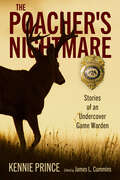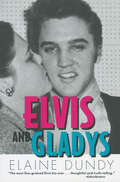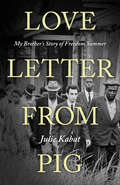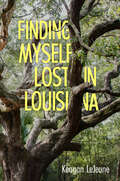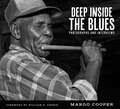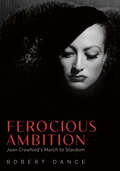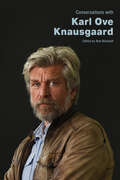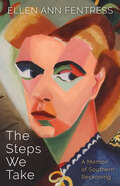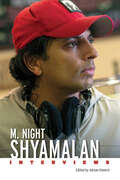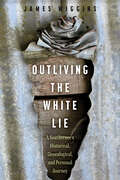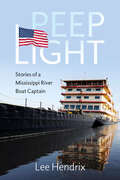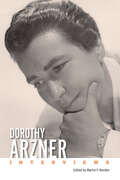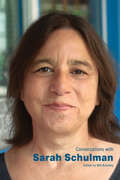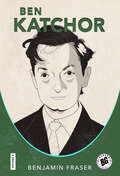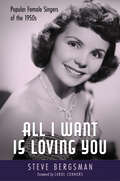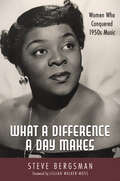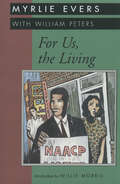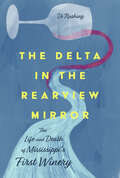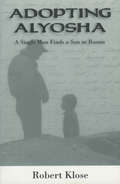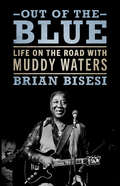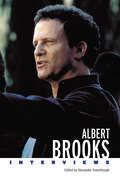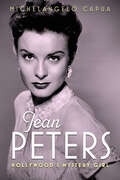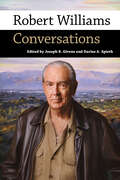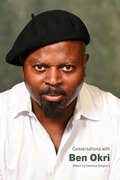- Table View
- List View
The Poacher's Nightmare: Stories of an Undercover Game Warden
by Kennie PrinceRaccoons are not the only bandits wearing masks in the wilderness. Growing up, author Kennie Prince spent most of his time in the woods and creeks near his home in Rankin County, Mississippi. A highly skilled outdoorsman, Prince began his career with the Mississippi Department of Wildlife Conservation in 1983 and dedicated his life to protecting Mississippi’s fish and wildlife resources in dangerous undercover work. The Poacher’s Nightmare: Stories of an Undercover Game Warden contains dozens of hair-raising accounts of covert wildlife operations, often spanning years, requiring ingenious planning, complicated secrecy, and deft coordination.Prince infiltrated bloody-minded, wary criminal groups, winning their trust. When his traps were fully set, he involved other state and federal law enforcement officials to bring an abrupt halt to abominable thefts of vast fish and wildlife resources from the public trust. Smart, creative, knowledgeable, tenacious, disciplined, passionate, and a natural-born actor, Prince bore a unique skillset that made him an ideal fit for this perilous undertaking. This memoir details how Prince gained the confidence of tightly knit circles of loyal, leery poachers and put an end to their destructive evil.
Elvis and Gladys (Southern Icons Series)
by Elaine DundyWho on the planet doesn't know that Elvis Presley gave electrifying performances and enthralled millions? Who doesn't know that he was the King of Rock 'n' Roll? But who knows that the King himself lived in the thrall of one dominant person? This was Gladys Smith Presley, his protective, indulgent, beloved mother. Elvis and Gladys, one of the best researched and most acclaimed books on Elvis's early life, reconstructs the extraordinary role Gladys played in her son's formative years. Uncovering facts not seen by other biographers, Elvis and Gladys reconstructs for the first time the history of the mother and son's devoted relationship and reveals new information about Elvis—his Cherokee ancestry, his boyhood obsession with comic books, and his early compulsion to rescue his family from poverty. Coming to life in the compelling narrative is the poignant story of a unique boy and the maternal tie that bound him. It is at once an intimate psychological portrait of a tragic relationship and a mesmerizing tale of the early years of an international idol. “For once, a legend is presented to us by the mind and heart of a literate, careful biographer who cares,” wrote Liz Smith in the New York Daily News when Elvis and Gladys was originally published in 1985. This is the book, Smith says, “for any Elvis lover who wants to know more about what made Presley the man he was and the mama's boy he became.” The Boston Globe called this thoughtful, informative biography of one of popular music's most enduring stars “nothing less than the best Elvis book yet.”
Love Letter from Pig: My Brother's Story of Freedom Summer
by Julie KabatIn the summer of 1964, the FBI found the smoldering remains of the station wagon that James Chaney, Michael Schwerner, and Andrew Goodman had been driving before their disappearance. Shortly after this awful discovery, Julie Kabat’s beloved brother Luke arrived as a volunteer for the Mississippi Summer Project. Teaching biology to Freedom School students in Meridian, Luke became one of more than seven hundred student volunteers who joined experienced Black civil rights workers and clergy to challenge white supremacy in the nation’s most segregated state. During his time in Mississippi, Luke helped plan the community memorial service for Chaney, attended the Democratic National Convention in support of the Mississippi Freedom Democratic Party, and even spent time in jail for “contributing to the delinquency of minors.” This arrest followed his decision to take students out for ice cream. Through his activism, Luke grappled with many issues that continue to haunt and divide us today: racialized oppression, threats of violence, and segregation whether explicit in law or implicit through custom. Sadly, Luke died just two years after Freedom Summer, leaving behind copious letters, diaries, and essays, as well as a lasting impact on his younger sister, nicknamed “Pig.” Drawing on a wealth of primary resources, especially her brother’s letters and diaries, Kabat delves deep into her family history to understand Luke’s motivations for joining the movement and documents his experiences as an activist. In addition to Luke’s personal narrative, Kabat includes conversations with surviving Freedom School volunteers and students who declare the life-long legacy of Freedom Summer. A sister’s tribute to her brother, Love Letter from Pig: My Brother’s Story of Freedom Summer addresses ongoing issues of civil rights and racial inequality facing the nation today.
Finding Myself Lost in Louisiana
by Keagan LeJeuneIn Finding Myself Lost in Louisiana, author Keagan LeJeune brilliantly weaves the unusual folklore, landscape, and history of Louisiana along with his own family lineage that begins in 1760 to trace the trajectory of people’s lives in the Bayou State. His account confronts the challenging environmental record evident in Louisiana’s landscapes. LeJeune also celebrates and memorializes traditions of some underrepresented communities in Louisiana, communities that are vanishing or have vanished—communities including the author’s own.Each section in the memoir is a journey to a fascinating place, but it’s also a search for LeJeune’s own sense of belonging. The book is an adventure and a pilgrimage across Louisiana to explore its future and to reckon with feelings of loss and anxiety accompanying climate disasters. LeJeune travels to Louisiana’s geographic center to learn what waits there. He chases the ghosts of Hot Wells, a shuttered healing resort, and he kneels at the tomb of folk saint Charlene Richard. With every adventure, every memory, he ends up much closer to home.
Deep Inside the Blues: Photographs and Interviews (American Made Music Series)
by Margo CooperDeep Inside the Blues collects thirty-four of Margo Cooper’s interviews with blues artists and is illustrated with over 160 of her photographs, many published here for the first time. For thirty years, Cooper has been documenting the lives of blues musicians, their families and homes, neighborhoods, festivals, and gigs. Her photographic work combines iconic late-career images of many legendary figures including Bo Diddley, Honeyboy Edwards, B. B. King, Pinetop Perkins, and Hubert Sumlin with youthful shots of Cedric Burnside, Shemekia Copeland, and Sharde Thomas, themselves now in their thirties and forties. During this time, the Burnside and Turner families and other Mississippi artists such as T-Model Ford, James “Super Chikan” Johnson, and L. C. Ulmer entered the national and international spotlight, ensuring the powerful connection between authentic Delta, Hill Country, and Piney Woods blues musicians and their audience continues. In 1993, Cooper began photographing in the clubs around New England, then in Chicago, and before long in Mississippi and Helena, Arkansas. On her very first trips to Mississippi in 1997 and 1998, Cooper had the good fortune to photograph Sam Carr, Frank Frost, Bobby Rush, and Otha Turner, among others. “The blues come out of the field,” Ulmer told Cooper. Seeing those fields, as well as the old juke joints, country churches, and people’s homes, inspired her. She began recording interviews with the musicians, sometimes over a period of years, listening and asking questions as their narratives unfolded. Many of the key blues players of the period have already passed, making their stories and Cooper’s photographs of them all the more poignant and valuable.
Ferocious Ambition: Joan Crawford’s March to Stardom
by Robert DanceRobert Dance’s new evaluation of Joan Crawford looks at her entire career and—while not ignoring her early years and tempestuous personal life—focuses squarely on her achievements as an actress, and as a woman who mastered the studio system with a rare combination of grit, determination, beauty, and talent.Crawford’s remarkable forty-five-year motion picture career is one of the industry’s longest. Signing her first contract in 1925, she was crowned an MGM star four years later and by the mid-1930s was the most popular actress in America. In the early 1940s, Crawford’s risky decision to move to Warner Bros. was rewarded with an Oscar for Mildred Pierce. This triumph launched a series of film noir classics. In her fourth decade she teamed with rival Bette Davis in Whatever Happened to Baby Jane?, proving that Crawford, whose career had begun by defining big-screen glamour, had matured into a superb dramatic actress. Her last film was released in 1970, and two years later she made a final television appearance, forty-seven years after walking through the MGM gate for the first time. Crawford made a successful transition into business during her later years, notably in her long association with Pepsi-Cola as a board member and the brand’s leading ambassador. Overlooked in previous biographies has been Crawford’s fierce resolve in creating and then maintaining her star persona. She let neither her age nor the passing of time block her unrivaled ambition, and she continually reimagined herself, noting once that, for the right part, she would play Wally Beery’s grandmother. But she was always the consummate star, and at the time of her death in 1977, she was a motion picture legend and a twentieth-century icon.
Conversations with Karl Ove Knausgaard (Literary Conversations Series)
by Bob BlaisdellNorwegian author Karl Ove Knausgaard (b. 1968) made a literary mark on his home country in 1998, when his debut novel won the prestigious Norwegian Critics Prize for Literature. His fame continued to grow with the publication of his six-volume autobiographical series Min Kamp, or My Struggle. Translated into English in 2012, the critically acclaimed and controversial series garnered global attention, as did its author. Conversations with Karl Ove Knausgaard is a collection of twenty-two interviews, each conducted during the ten-year span in which Knausgaard’s literary prowess gained worldwide recognition.Knausgaard is both a daring writer and a daring interviewee. He grounds his observations in the ordinary aspects of the world around him, which, he insists, is the same world in front of most of his readers. He regards his appearances in newspapers, magazines, and literary festivals as “a performance,” where he plays himself. While that role may differ from his inner life, it is consistent with the role he plays in his autobiographical novels. Fans of Knausgaard will easily recognize this public persona, an embodiment of the protagonist, husband, and father featured in My Struggle and in the Seasons quartet.Knausgaard discusses his work, aspects of his personal life, and his writing routines and practices in marvelous detail. He comments on literary and artistic world classics and on international contemporary authors. A bilingual speaker, he is accustomed to appearing before the press and in front of audiences in his roles as a famous author and as the publisher and cofounder of the publishing house Pelikanen (Pelican). Remarkable for his candor and directness, Knausgaard delivers the same variety and number of surprises in these interviews as he does in his most thrilling books.
The Steps We Take: A Memoir of Southern Reckoning (Willie Morris Books in Memoir and Biography)
by Ellen Ann FentressEllen Ann Fentress is a veteran writer for the New York Times, the Washington Post, and The Atlantic. She’s also a seasoned southern woman, specifically a white Mississippi one. “Women do a lot for free, no matter the era, no matter the location,” she observes in The Steps We Take: A Memoir of Southern Reckoning. As a good southern woman, Fentress felt a calling to help others. As a teenager, she volunteered as a March of Dimes quarter collector and sang hymns at a soup-and-salvation homeless shelter. Later, she married, reared two daughters, renovated a 1941 Colonial home, practiced her French, and served as the bookkeeper for her husband’s business. She followed the scripts she was handed by society. But there were the convenient lies and silences that she and most southern—make that American—white women have settled on in the name of convention and, to be honest, inertia. For Fentress, her dodges both behind her front door and beyond became impossible to miss. Eventually, along with claiming a personal second act at midlife, she realized the most urgent community work she could do was to spur truth-telling about the history she knew well and participated in. She was one of the nearly one million students in the South enrolled in all-white “segregation academies,” a sweeping movement away from public education that continues to warp the Deep South today. To document and engage with this history, she founded the Admissions Project: Racism and the Possible in Southern Schools, which has been featured in the Washington Post, Slate, Forbes and other publications. The Steps We Take tells how one woman reckons with both a region’s history and her own past. Through a lens ranging from intimate to the widely human, through moments painful and darkly comic, Fentress casts a penetrating light on what it means to be a white southern woman today.
M. Night Shyamalan: Interviews (Conversations with Filmmakers Series)
by Adrian GmelchAs a visionary and distinctive filmmaker, M. Night Shyamalan (b. 1970) has consistently garnered mixed reception of his work by critics and audiences alike. After the release of The Sixth Sense, one of the most successful films from the turn of the millennium, Shyamalan promptly received two Academy Award nominations for Best Director and Best Original Screenplay. Since then, lauded films such as Unbreakable (2000), Signs (2002), and Split (2016) have alternated with less successful and highly criticized works, such as Lady in the Water (2006), The Last Airbender (2010), and After Earth (2013). Yet despite his polarizing aesthetics and uneven career, for two decades Shyamalan has upheld his cinematic style and remained an influential force in international film. With interviews spanning from 1993 through 2022, M. Night Shyamalan: Interviews is the first survey of conversations with the filmmaker to cover the broad spectrum of his life and career. This collection includes interviews with renowned American film journalists such as Jeff Giles, Carrie Rickey, and Stephen Pizzello, and reflects the intense international interest in Shyamalan’s work by including newly translated conversations from French and German sources. Through its thorough and careful curation, this volume is bound to shake up readers’ perceptions of M. Night Shyamalan.
Outliving the White Lie: A Southerner's Historical, Genealogical, and Personal Journey
by James WigginsPart history, part memoir, Outliving the White Lie: A Southerner’s Historical, Genealogical, and Personal Journey charts conflicting narratives of American and southern identity through a blend of public, family, and deeply personal history. Author James Wiggins, who was raised in rural Mississippi, pairs thorough historical research with his own lived experiences. Outliving the White Lie looks squarely at the many untruths regarding the history and legacy of race that have proliferated among white Americans, from the misrepresentations of Black Confederates to the myth of a “postracial” America.Though the US was ostensibly established to achieve freedom and shrug off an oppressive English monarchy, this mythology of the United States’ founding belies a glaring paradox—that this is a country whose foundation depends entirely on coercion and enslavement. How, then, could generations of decent people, people who valued individual liberty and personal autonomy, coexist within and alongside such a paradox? Historians suggest an answer: that these apparently dissonant points of view were reconciled in antebellum America by white citizens learning “to live with slavery by learning to live a lie.” The operative lie throughout American history and the lie underpinning the institution of slavery, they argue, has always been the fallacy of race—deliberately propagated tenets asserting skin color as the preeminent marker of identity and value. Wiggins takes accepted delusions to task in this moving reconciliation of southern living.
Peep Light: Stories of a Mississippi River Boat Captain
by Lee HendrixMost people only consider the Mississippi River when they cross it or when it inconveniently abandons its banks. But every year, millions of tons of cargo are transported by towboats on the river. In Peep Light: Stories of a Mississippi River Boat Captain, Captain Lee Hendrix provides unique insight on people who work and live on and near the Mississippi River. Hendrix, formerly a pilot for the Delta Queen Steamboat Co., has worked on the Mississippi for fifty years, first as a towboat deckhand in 1972 and eventually as a pilot of towboats and passenger vessels. In 2014, Hendrix became captain of the towboat Mississippi with the US Army Corps of Engineers, then he later retired to return to passenger vessels. For Hendrix and others like him, he is at home on the river, living and dining with the same people they work with, working with familiar faces for years at a time and yet meeting new people every day.Demonstrating a fascination not only with the river but also with the passions and dreams of those who live and work on it, these stories range from personal reflections on aging, experiencing one’s first night on the river and the complex emotions that come with it, working on the deck, promotion to pilot, the characters working aboard these boats, and the history of the river itself. Peep Light unites humans with the river through engaging storytelling and sheds light on Hendrix’s rare experience along one of the most powerful and important waterways in the world.
Dorothy Arzner: Interviews (Conversations with Filmmakers Series)
by Martin F. NordenThrough dozens of interviews, a detailed chronology and filmography, and a selection of Dorothy Arzner’s own writings—including her unfinished autobiography—Dorothy Arzner: Interviews offers major insights into and an in-depth examination of the life and career of one of the few women to direct films during Hollywood’s Golden Age. A key figure in Hollywood for decades, she directed more studio films than any other woman in history. Her movies often focused on courageous women who must make difficult decisions to remain true to themselves—women not unlike Arzner herself, who once said that “all we can ever do in our work is write our own biography.”Dorothy Arzner (1897–1979) began her film career in 1919 as a script typist for the Famous Players-Lasky company, which later became Paramount Pictures. She quickly rose through the ranks to become a script supervisor, screenwriter, and editor before directing her first film, Fashions for Women, in 1927. After the release of her final Hollywood film, First Comes Courage, in 1943, Arzner changed directions in her professional life. She made several training films for the Women’s Army Auxiliary Corps during World War II and directed many television commercials for Pepsi-Cola in the 1950s. She concluded her career by serving as a filmmaking instructor at the Pasadena Playhouse College of Theatre Arts and UCLA, where she helped launch the first wave of college-trained moviemakers.
Conversations with Sarah Schulman (Literary Conversations Series)
by Will BrantleyThe twenty-four interviews collected in Conversations with Sarah Schulman, roughly a fifth of those that exist, have enabled Schulman to expound upon her distinctive fusion of art and social commitment. Ranging from major forums to smaller venues, and covering a period of more than thirty years, these interviews provide full evidence of Schulman’s value as a pivotal player in the intellectual life of her time. Schulman’s career as a writer, activist, teacher, and oral historian is now in its fifth decade. Spanning multiple fiction genres, her eleven novels include After Delores (1988), Rat Bohemia (1995), The Child (2007), and Maggie Terry (2018). A native New Yorker, Schulman (b. 1958) writes for the people that she writes about—women and men making the most of a society that seems continually marked by homophobia, which Schulman regards as less a phobia than an unacknowledged pleasure system. Readers have come to relish Schulman’s provocations, nowhere more so than through her books of nonfiction on topics such as gentrification and the interlocking nature of conflict and abuse. And since the early 1980s, when Schulman worked as a journalist, readers have come to applaud her searing indictments of the nation’s woeful response to its AIDS crisis. Schulman has received the Kessler Award from CLAGS: The Center for LGBTQ Studies in honor of her body of work that has influenced the field of gay and lesbian studies, as well as the Bill Whitehead Award from Publishing Triangle for lifetime achievement. She holds an endowed chair in creative writing at Northwestern University.
Ben Katchor (Biographix #2)
by Benjamin FraserThe recipient of a 2000 MacArthur fellowship, Ben Katchor (b. 1951) is a beloved comics artist with a career spanning four decades. Published in indie weeklies across the United States, his comics are known for evoking the sensorium of the modern metropolis. As part of the Biographix series edited by Frederick Luis Aldama, Ben Katchor offers scholars and fans a thorough overview of the artist’s career from 1988 to 2020. In some of his early strips published in the 1980s in the New York Press and Forward, Katchor introduced one of his quintessential characters, Julius Knipl, a real estate photographer. By crafting Knipl as an urban flâneur prone to wandering, Katchor was able to variously demonstrate his absurd humor and linguistic whimsy alongside narratives packed with social critique. Three volumes collecting the Julius Knipl strips, Julius Knipl, Real Estate Photographer; Cheap Novelties: The Pleasures of Urban Decay; and The Beauty Supply District, helped cement Katchor as a distinguished comics artist and social commentator. Later works, such as The Cardboard Valise, Hand-Drying in America, and The Dairy Restaurant, have diversified his comics legacy. Rooted in close analyses of the artist’s numerous series and collections, each chapter in Ben Katchor is dedicated to a distinct aspect of the urban experience. Individual pages from Katchor’s work depict not only the visual, but also the auditory, tactile, and olfactory dimensions of life in the city.
All I Want Is Loving You: Popular Female Singers of the 1950s (American Made Music Series)
by Steve BergsmanIn All I Want Is Loving You: Popular Female Singers of the 1950s, author Steve Bergsman focuses on the white, female artists of the 1950s, a time that predated the chart-topping girl groups of the early 1960s. These popular performers, many of whom graduated out of the big bands of the 1940s, impacted popular music in a huge way. As the last bastion of traditional pop and the last sirens of swing, they undeniably shined in the spotlight. Yet these singers’ fame dimmed relatively quickly with the advent of rock ’n’ roll. A fortunate few, like Doris Day, Patti Page, Peggy Lee, and Debbie Reynolds, experienced some of their biggest hits in the late 1950s, and Eydie Gormé broke out in the 1960s. The luckiest, including Dinah Shore and Rosemary Clooney, ventured to television with varying degrees of success. Others would become major attractions at nightclubs in Las Vegas or, like Teresa Brewer, shift into the jazz world.Though the moment did not last, these performers were best-selling singers, darlings of the disk jockeys, and the frenetic heartbeat of fan clubs during their heyday. In a companion volume, Bergsman has written the history of African American women singers of the same era. These Black musicians transitioned more easily as a new form of music, rock ’n’ roll, skyrocketed in popularity. In both books, Bergsman reintroduces readers to these talented singers, offering a thorough look at their work and turning up the volume on their legacy.
What a Difference a Day Makes: Women Who Conquered 1950s Music (American Made Music Series)
by Steve BergsmanIn What a Difference a Day Makes: Women Who Conquered 1950s Music, Steve Bergsman highlights the Black female artists of the 1950s, a time that predated the chart-topping girl groups of the early 1960s. Many of the singers of this era became wildly famous and respected, and even made it into the Rock ’n’ Roll Hall of Fame. However, there were many others, such as Margie Day, Helen Humes, Nellie Lutcher, Jewel King, and Savannah Churchill, who made one or two great records in the 1950s and then disappeared from the scene. The era featured former jazz and blues singers, who first came to prominence in the 1940s, and others who pioneered early forms of rock ’n’ roll.In a companion volume, Bergsman has written the history of white women singers of the same era. Although song styles were parallel, the careers of Black and white female singers of the period ran in very different directions as the decade progressed. The songs of African American vocalists like Dinah Washington and Etta James were segregated to the R&B charts or covered by pop singers in the early and mid-1950s but burst into prominence in the last part of the decade and well into the 1960s. White singers, on the other hand, excelled in the early 1950s but saw their careers decline with the advent of rock music. In this volume, Bergsman takes an encyclopedic look at both the renowned and the sadly faded stars of the 1950s, placing them and their music back in the spotlight.
For Us, the Living (Banner Books)
by Myrlie Evers WilliamsIn 1967, when this brave book was first published, Myrlie Evers said, “Somewhere in Mississippi lives the man who murdered my husband.” Medgar Evers died in a horrifying act of political violence. Among both blacks and whites, the killing of this Mississippi civil rights leader intensified the menacing moods of unrest and discontent generated during the civil rights era. His death seemed to usher in a succession of political shootings—Evers, then John Kennedy, then Martin Luther King, Jr., then Robert Kennedy. At thirty-seven while field secretary for the NAACP, Evers was gunned down in Jackson, Mississippi, during the summer of 1963. Byron De La Beckwith, an arch segregationist charged with the crime, was released after two trials with hung juries. In 1994, after new evidence surfaced thirty years later, Beckwith was arrested and tried a third time. Medgar Evers's widow saw him convicted and jailed with a life sentence. In For Us, the Living this extraordinary woman tells a moving story of her courtship and of her marriage to this heroic man who learned to live with the probability of violent death. She describes her husband's unrelenting devotion to the quest of achieving civil rights for thousands of black Mississippians and of his ultimate sacrifice on that hot summer night. With this reprinting of her poignant yet painful memoir, a book long out of print comes back to life and underscores the sacrifice of Medgar Evers and his family. Introduced in a reflective essay written by the acclaimed Mississippi author Willie Morris, this account of Evers's professional and family life will cause readers to ponder how his tragic martyrdom quickened the pace of justice for black people while withholding justice from him for thirty years. Since the conviction of Beckwith in a dramatic and historical trial in a Mississippi court there has been renewed acclaim for Evers. One speculates that, had he lived, he might have attained even more for the equality of African Americans in national life.
The Delta in the Rearview Mirror: The Life and Death of Mississippi's First Winery
by Di RushingAfter graduating from Mississippi State University in 1976, Di Rushing and her husband, Sam, found themselves back on their family farm near Merigold, Mississippi, with 350 acres and no real clue what to do. The couple decided to open the first winery in Mississippi, and with it, a successful business was born. Six years later, a small restaurant joined the Delta winery. Both businesses were thriving by 1990, with eight national award-winning wines, a beautiful vineyard, and a successful restaurant.But in March of 1990, a series of unforeseen events rocked the operation. After the Rushings discovered one of the tour guides, Ray Russell, selling drugs in the winery parking lot, they fired him. He responded with a terrorizing vengeance that persisted over the next nine months. In the early morning hours, the former guide broke into the winery, crept into the wine cellar, and released the entire inventory—nearly a quarter of a million dollars’ worth—down the drain. Fortunately, his incompetence thwarted his most destructive intention to blow up the restaurant. In his rampage, he broke all the windows, which allowed the gas from the kitchen oven to escape, sparing the premises. Though the Rushings rebuilt with the help of their community, Russell continued to stalk and threaten the young family. As his menacing behavior continued to escalate, the Rushings closed their business of fourteen years and moved to Ouray, Colorado, where they began rebuilding their lives. Culminating in the sudden, violent murders of Russell, his wife, and his father twenty-five years later, this book tells a story of both shock and resilience, charting Mississippi history in the process.Intertwined with the true crime narrative, The Delta in the Rearview Mirror: The Life and Death of Mississippi’s First Winery details author Di Rushing’s life in and out of Mississippi, including growing up in 1960s Greenville, attending university, traveling overseas, and the relationships she cultivated along the way.
Adopting Alyosha: A Single Man Finds a Son in Russia
by Robert KloseAlthough single women have long been permitted to adopt children, adoption by unmarried men remains an uncommon experience in Western culture. However, Robert Klose, who is single, wanted a son so badly that he faced down the opposition and overcame seemingly insurmountable barriers to realize his goal. The story of his quest for a son is detailed in this intimate personal account. The frustrating truth he reports is that most adoption agencies seem unsure of how to respond to a single man's application. During the three years that it took for him to proceed through the adoption maze, Klose met resistance and dead ends at every attempt. Happenstance finally led him to Russia, where he found the child of his dreams in a Moscow orphanage, a Russian boy named Alyosha. This is the first book to be written by a single man adopting from abroad. The narrative of his quest serves as an instructional firsthand manual for single men wishing to adopt. It details the prospective father's heightening sense of anticipation as he untangles bureaucratic snarls and addresses cultural differences involved in adopting a foreign child. When he arrives in Russia, he supposes the adoption will be a matter of following cut-and-dried procedures. Instead, his difficulties are only beginning. Although he meets kind and generous Russians, his encounter with the child welfare system in Moscow turns out to be both chaotic and bizarre. However, his dogged ordeal pays off more bountifully than he ever could have hoped. In the end he comes face to face with a little boy who changes his life forever.
Out of the Blue: Life on the Road with Muddy Waters (American Made Music Series)
by Brian BisesiOut of the Blue: Life on the Road with Muddy Waters begins with a moment lifted from a young musician’s dreams. Brian Bisesi, a guitarist barely out of his teens, is invited on stage to fill in for a missing member of the band backing blues legend Muddy Waters. This life-changing quirk of fate opens the door into a world of challenges and opportunities that Bisesi, an Italian American reared in the comforts of a New York City suburb, can barely imagine. Despite their differences, Bisesi and Waters hit it off, and what might have been a one-night stand turns into a career. From 1978 to 1980, Bisesi works for Waters as his road manager, bean-counter, and at times his confidant, while often sitting in with the band. Bisesi’s years with the band take him to Europe, Japan, Canada, and across the United States as Waters tours—and parties—with rock gods like Eric Clapton, the Rolling Stones, a Beatle, and the gamut of musicians who came of age with Waters and introduced a younger generation to the blues. In Out of the Blue, Bisesi captures it all: from the pranks and tensions among bluesmen enduring a hard life on the road, to observations about Waters’s technique, his love of champagne and reefer, his eye for women, and his sometimes-acrid views of contemporary music. Bisesi has sharp insights into the ill-conceived management decisions that led to the dissolution of Waters’s longest-serving band in June of 1980. This book will rivet, amuse, and occasionally infuriate blues aficionados. It is a raucous and intimate portrait of the blues scene at a pivotal moment in time that fascinates music historians and blues fans alike.
Albert Brooks: Interviews (Conversations with Filmmakers Series)
by Alexander GreenhoughAlbert Brooks: Interviews brings together fourteen profiles of and conversations with Brooks (b. 1947), in which he contemplates, expounds upon, and hilariously jokes about the connections between his show business upbringing, an ambivalence about the film industry, the nature of fame and success, and the meaning and purpose of comedy. Throughout all these encounters, Brooks expresses an unwavering commitment to his own artistic expression as a filmmaker and a rejection of mainstream conventions. With his questioning and critical disposition, nothing seems certain for Albert Brooks except for the integrity of art and the necessity for a wry skepticism about the incongruities of everyday life in corporate America. Brooks is neither a Hollywood insider nor an outsider. He’s somewhere in-between. Since the early 1970s, this inimitable actor-writer-director has incisively satirized the mass media system from within. After initial work as an inventive comedian, both live and on network television, Brooks contributed six shorts to the first season of Saturday Night Live, which earned him a cult following for their avant-garde form and sensibility. These were followed by his feature debut, Real Life, the first of only seven films—including Modern Romance, Lost in America, and Defending Your Life—that Brooks has directed to date. His limited output reflects not only the difficulty in financing idiosyncratic films, but equally the exacting seriousness which Brooks has in making audiences laugh and think at the same time.
Jean Peters: Hollywood's Mystery Girl (Hollywood Legends Series)
by Michelangelo CapuaFrom 1947 to 1955, Jean Peters (1926–2000) appeared in films opposite such Hollywood leading men as Tyrone Power, Marlon Brando, Burt Lancaster, Spencer Tracy, Richard Widmark, and Robert Wagner, as well as international stars including Louis Jourdan and Rossano Brazzi. Despite her talent and status, Peters eschewed the star-studded lifestyle of 1950s Hollywood, turning down roles that were “too sexy” and refusing to socialize with other actors, discuss her private life in the press, or lead the glamorous lifestyle often associated with her peers. She was seen as a mystery to reporters, who constantly tried to discover tidbits about her personal life.In 1957, her marriage to Howard Hughes led to her retirement from acting and her further withdrawal from social events in Hollywood. Instead, she shifted her attention to charitable work, arts and crafts, and university studies in psychology and anthropology. Her status as an enigma only grew as she agreed never to speak of her marriage with Hughes. After her divorce, however, Peters attempted to resume her acting career in television but never regained her previous level of stardom. Jean Peters: Hollywood's Mystery Girl grants an in-depth analysis of each of her nineteen films and is enriched by several high-quality photographs from the author’s personal collection.
Hanna and Barbera: Conversations (Television Conversations Series)
by Kevin Sandler and Tyler Solon WilliamsHanna and Barbera: Conversations presents a lively portrait of Bill Hanna and Joe Barbera, the influential producers behind Tom and Jerry, the Flintstones, Scooby-Doo, the Smurfs, and hundreds of other cartoon characters who continue to entertain the world today. Encompassing more than fifty years of film and television history, the conversations in this volume include first-person accounts by the namesakes of the Hanna-Barbera studio as well as recollections by artists and executives who worked closely with the pair for decades. It is the first collection of its kind about Hanna and Barbera, likely the most prolific animation producers of the twentieth century, whose studio once outflanked its competitor Walt Disney in output and influence.Bill Hanna fell into animation in 1930 at the Harman-Ising studio in Los Angeles, gaining skills across the phases of production as MGM opened its animation studio. Joe Barbera, a talented and sociable artist, entered the industry around the same time at the wild and woolly Van Beuren studio in Manhattan, learning the ins and outs of animation art before crossing the country to join MGM. In television, Hanna’s timing and community-oriented work ethic along with Barbera’s knack for sales and creating funny characters enabled Hanna-Barbera to build a roster of beloved cartoon series. A wide range of pieces map Hanna and Barbera’s partnership, from their early days in Hollywood in the 1930s to Cartoon Network in the 1990s, when a new generation took the reins of their animation studio. Relatively unknown when they made over one hundred Tom and Jerry theatrical cartoons at MGM in the 1940s and 1950s, Hanna and Barbera became household names upon entering the new medium of television in 1957. Discussions here chart their early primetime successes as well as later controversies surrounding violence, overseas production, and the lack of quality in their Saturday morning cartoons. With wit, candor, insight, and bravado, Hanna and Barbera: Conversations reflects on Bill and Joe’s breakthroughs and shortcomings, and their studio’s innovations and retreads.
Robert Williams: Conversations (Conversations with Comic Artists Series)
by Joseph R. Givens and Darius A. SpiethA legendary figure of underground comix, Robert Williams (b. 1943) is an important social chronicler of American popular culture. The interviews assembled in Robert Williams: Conversations attest to his rhetorical powers, which match the high level of energy evident in his underground comix and action-filled canvases.The public perception of Williams was largely defined by two events. In 1987, Guns N’ Roses licensed a Williams painting for the cover of their best-selling album Appetite for Destruction. However, Williams’s cover art stirred controversies and was moved to the inside of the album. The second defining event was Williams’s participation in the Helter Skelter exhibition at the Los Angeles Museum of Contemporary Art in 1992. Protests ensued when a room was set aside to feature his work. Uncovering long-forgotten and hard-to-find interviews, this collection serves as a social chronicle of counterculture from the 1960s through the early 2000s. One of the founders of the original ZAP Comix collective in the 1960s, Williams drew inspiration from pulp fiction, hot rod culture, pin-up girls, and traditional academic art. He invented the comics character Cootchy Cooty and worked for the studios of Ed “Big Daddy” Roth. He rubbed shoulders with outlaw motorcycle gangs and tested the legal limits of what was permissible comic book art during his day. He has often been described as a figure courting scandal and controversy, a reputation he discusses repeatedly in some of the interviews here. Since the 1980s, Williams has emerged as a force in the fine art world, raising interesting questions about how painting and comic art interrelate.
Conversations with Ben Okri (Literary Conversations Series)
by Vanessa GuigneryConversations with Ben Okri collects twenty-six interviews that range from 1986 to 2023 and reflect the international resonance of Nigerian writer Ben Okri's work. The reader is given access to the various phases of Okri’s life and career, beginning with his childhood (b. 1959) and upbringing in Nigeria and the publication of his early short stories and novels. The interviews also explore the tremendous success of The Famished Road (for which Okri became the first Black African writer to receive the Booker Prize in 1991) and the dazzling creativity of his subsequent work in a multiplicity of literary genres. The volume offers insight into the writer’s creative process and his unique views on literature, history, memory, politics, freedom, spirituality, and environmental issues. The conversations often veer into fascinating philosophical discussions about the nature of art and reality, the value of myth, and the dynamics of storytelling.Since the publication of his first novel in 1980, Okri has encouraged his readers to open their minds and eyes to new modes of perceiving reality. Convinced of the universality of art, he has been intent on redreaming the world from a variety of perspectives in poems, essays, short stories, novels, and plays written over a period of more than forty years. Throughout his career, Ben Okri has never stopped experimenting with new forms, creating the stoku (a mixture of short story and haiku), endowing his fictional and nonfictional creations with poetic undertones, and collaborating with visual artists, musicians, and dancers.
